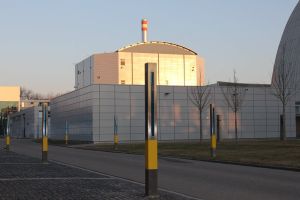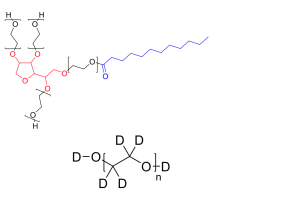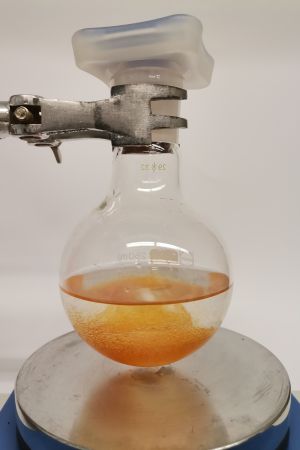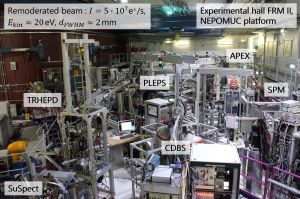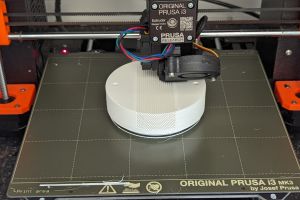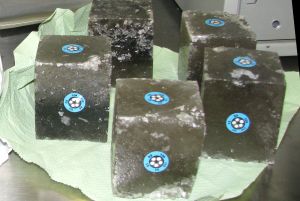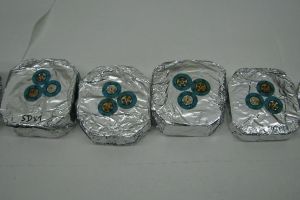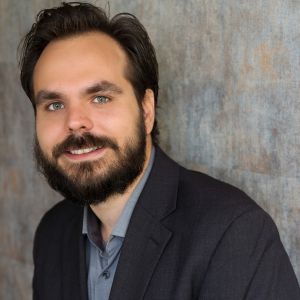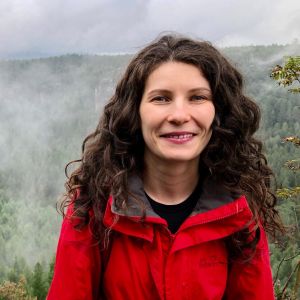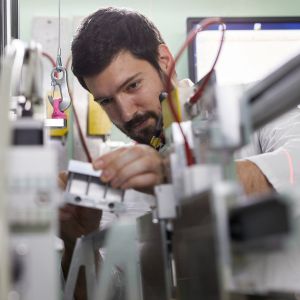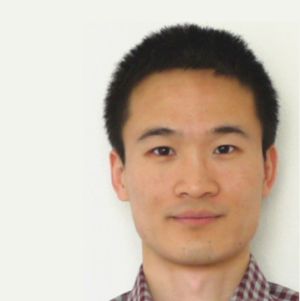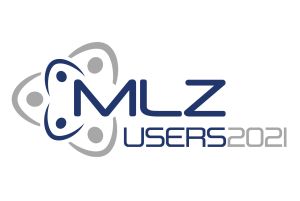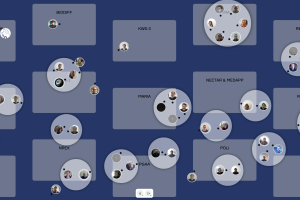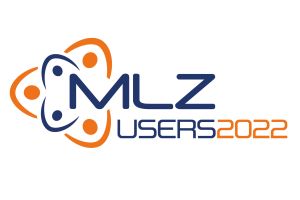MLZ ist eine Kooperation aus:
 > Technische Universität München
> Technische Universität München > Helmholtz-Zentrum Hereon
> Helmholtz-Zentrum Hereon
 > Forschungszentrum Jülich
> Forschungszentrum Jülich
MLZ ist Mitglied in:
 > LENS
> LENS > ERF-AISBL
> ERF-AISBL
MLZ in den sozialen Medien:

MLZ
Lichtenbergstr.1
85748 Garching
Newsletter I/2022
Jump directly to the chapters! (and don't forget to enlarge the pictures by clicking them!)
» Editorial» Instruments» People» UsersEditorial
Restart delayed
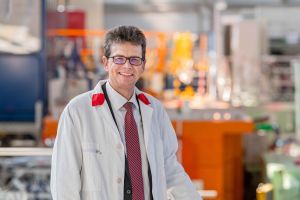
Editorial by Prof. Dr. Peter Müller-Buschbaum (Scientific Director FRM II/ Scientific Director MLZ) © A. Heddergott/ TUM
In our last Newsletter we reported on the defect of our cold neutron source, which hindered a restart of the FRM II in spring 2021. After the removal of the cold source we were prepared for a restart in March this year. However, a water leakage near the central channel was observed that has to be repaired before restarting. Initially, the exchange of the central channel where the fuel element is installed, had been planned for 2024, as the high neutron flux might cause radiation damages in the surrounding material. As the spare part is not available right now, we are sorry not to provide neutrons before August 2022. Our colleagues from the reactor division are working hard to restart as soon as possible.
In the mean time, we are improving our instruments and good progress is achieved to take into operation our new Neutron Guide Hall East. A big THANK YOU! to all our users for the continuous support, lastly shown by a large attendance at our annual user meeting in December 2021.
Looking forward to see you soon again in Garching!
#StandWithUkraine
Instruments
» New deuterated compounds available!» The new positron diffractometer
» 3D printable shielding for thermal and cold neutrons
» A brand new electron microscope for surface characterization
» Physics Lab: a user lab for general material characterization
» Inelastic neutron scattering at DNS: off to a flying start
» What spent fuel elements are useful for…
New deuterated compounds available!
We have developed new synthetic procedures to make available deuterated Span and Tween surfactants and also low molecular weight PEGs (see the figure for the chemical structures of an example with the polymerization degree n being typically between 4 and 15).
In the past, these compounds have not been available in their deuterated variants. They are used widely in soft matter research and in many industrial formulations.
Span and Tween surfactants
With our process we now can synthesize a large variety of different Span and Tween surfactants. These compounds consist of a hydrophilic sorbitan unit esterified with hydrophobic fatty acids (Span). Additional ethoxylation yields Tween surfactants (see pictures). All constituents can be deuterated selectively and contrast matched with D2O.
The low molecular weight PEGs have molecular weights between 200 and 600 g/mol. Both, chain lengths and molecular weight distributions are similar to the commercially available hydrogenous analogs.
The pictures shows the final step of the Tween synthesis procedure where in the final step salt residues are removed with the help of an ion exchange resin.
Don't miss the deadline!
In order to make partially or fully deuterated materials available to users, the JCNS offers a synthesis service for deuterated materials, primarily from its core competence areas of polymers and ethoxylation (e.g. surfactants).
The first deadline for deuteration proposals is on March 31st, 2022!
Find all details at https://indico.frm2.tum.de/e/deuteration1
J. Allgaier (JCNS)
The new positron diffractometer
The crystalline structure of surfaces plays a crucial role for a variety of physical phenomena and for many technical processes, such as the epitaxial growth of ultra-thin films or heterogeneous catalysis. Moreover, accurate models of the surface structure are necessary to calculate the electronic structure at the surface. Total-reflection high-energy positron diffraction (TRHEPD) exhibits outstanding surface sensitivity that allows the accurate determination of surface structures.
To make TRHEPD measurements possible, the availability of a bright monoenergetic positron beam is mandatory. We designed and installed a new TRHEPD instrument at the high-intensity positron source NEPOMUC.
First experiments for beam characterization have been performed, which are in good agreement with our simulations. Within the next beamtime, a first diffraction pattern will be recorded to benchmark the set-up.
M. Dodenhöft, S. Vohburger, C. Hugenschmidt (FRM II)
Rev. Sci. Instrum. 92(11):115103, 2021 (https://doi.org/10.1063/5.0062412)
3D printable shielding for thermal and cold neutrons
Effective neutron shielding is key to prevent the unnecessary irradiation of samples and instrument components or protect electronic components from radiation damage. To provide an option for custom-made quick and cost-effective shielding of thermal and cold neutrons, we developed a borated 3D-printing filament in cooperation with a commercial filament manufacturer.
Achievements
By using a Polylactic Acid (PLA) polymer and adding particles of hexagonal Boron nitride (h-BN), it was possible to create a new filament that is easily printable with all common fused-filament-fabrication (FFF) printers. We achieved a mass ratio of approximately 35%wt BN, resulting in a thickness of 5 mm of the material being sufficient to reach a transmission of only approximately 10-3 for thermal neutrons. The cost of our new filament is on the same order of magnitude as for standard high quality PLA filament.
The shielding at ANTARES
The picture shows the 3D printed, borated PLA (orange) used as neutron shielding for components of the neutron grating interferometer at ANTARES. The shielding is split in multiple parts with overlapping areas at the edges. The mounting bolts fixing the printed parts are covered with 3D printed threaded inserts.
M. Schulz (FRM II)
A brand new electron microscope for surface characterization
Having a closer look at our samples is getting easier! In an effort to provide state of the art scientific instrumentation to support the activities at the beamlines, the MLZ is, since recently, equipped with a Thermo Fischer Quattro S Environmental Scanning Electron Microscope (ESEM) operated in cooperation by JCNS and Hereon. The instrument is located in the Hereon Materials Science Lab at the new JCNS building UYL and is operated jointly by both MLZ partners.
ESEM vs. SEM
Beyond conventional SEM imaging, this instrument offers the possibility to work under relatively high pressure and in the presence of humidity and this, without having to subject the sample to any preliminary coating. Soft-matter scientists rejoice!
In addition, the instrument is equipped with an EDS detector for elemental analysis to expand the possibilities for materials scientists.
Installing the lab
Installing the instrument and preparing the lab during the pandemic time turned out to be quite a challenge. But with the support of the local JCNS technical group, the WISAG Fa., Thermo Fisher and our local team, Marie-Sousai Appavou (JCNS) and Armin Kriele (Hereon), a new microscopy lab raised from scratch.
By the end of December 2021, the instrument fulfilled its acceptance test. The ESEM instrument is now in its commissioning phase.
M.-S. Appavou (JCNS) , A. Kriele (Hereon)
How all of this was done is documented in the gallery:
Physics Lab: a user lab for general material characterization
The Physics Lab is back in operation, relocated with more space in two new rooms. Three dedicated x-ray diffractometers for phase determination of powders, thin films, in-situ battery measurements, residual stresses and reflectometry options are available. Available diffractometers are a PANalytical Empyrean and two Bruker D8’s. Choose between Cu, Mo or Cr x-ray source tubes, 0d/1d/2d detectors, various optics and sample tables, depending on your needs.
A wide range of machines for polishing, cutting, etching or annealing are available for sample preparation purposes.
Finally, a Physical Property Measurement System Dynacool14 will be installed in the summer, with various transport and magnetic measurement options (AC/DC resistance, heat capacity, VSM, DC magnetization, AC susceptibility, pressure cells and a dilution refrigerator). Stay tuned!
Be sure to visit the x-ray lab or directly contact us at physicslab@frm2.tum.de in order to discuss your needs and plan your experiment.
M. Skoulatos (FRM II)
Visit the Physics Lab in the gallery:
Find all updates at https://mlz-garching.de/physics-lab
Inelastic neutron scattering at DNS: off to a flying start
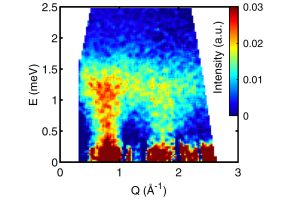
Time-of-flight inelastic neutron scattering data taken at 0.5 K on a frustrated quantum magnet at DNS. © American Physical Society
A major milestone in the development of time-of-flight inelastic neutron scattering option for DNS has been achieved recently.
Based on a successful DNS user experiment and the subsequent theoretical analysis, an international research team led by the scientists from EPFL in Switzerland has reported the experimental realization of the magnetic field induced quantum spin liquid state in a frustrated quantum magnet in Physical Review Letters.
Quantum spin liquids are exotic states of matter that form when strongly frustrated magnetic interactions induce a highly entangled quantum paramagnet far below the energy scale of the magnetic interactions. The inelastic neutron scattering data obtained at DNS provide crucial evidence for the presence of a highly correlated but fluctuating magnetic component in this material that persists at temperatures approaching absolute zero, a hallmark signature for quantum spin liquid.
Y. Su (JCNS)
Ivica Živković, et al., Phys. Rev. Lett. 127, 157204
What spent fuel elements are useful for…
After a 60 days working cycle in the reactor core, where a fuel element (FE) produces intense neutron beams for science, industry and medicine, it is placed in the cooling pool for more than six years. These spent FEs emit an intense gamma radiation – and this is what we need for our gamma irradiation facility (GIF). The advantage of this technique is that it can be used at any time and does not depend on reactor operation. A rather large sample-space volume of about 76 mm in diameter and 700 mm height allows for flexibility in the choice of the irradiated sample size. The typical gamma dose rate ranges from 0.05 kGy/h up to 50 kGy/h depending on the used FE, offering possibilities for various applications. Furthermore, temperatures between 30-150°C on the sample can be reached during the irradiation with a precision of +/- 1°.
Starting the project
The GIF’s development started in 2009 as a project supported by the DFG (Deutsche Forschungsgemeinschaft), and RWTH Aachen University. It was motivated by its use for the gamma domain wall decoration in rock salt crystals for visualization of the microstructure and re-crystallisation behaviour. This research still continues up to now, as worldwide, salt domes are considered as very promising long-time deposits for radioactive or chemical waste.
Applications
In the meantime, the GIF has developed from a research project to a routinous commercial application. Not only the study of geological samples, but also irradiations for material testing and properties change, radiation tests on electronic components, biological samples and so much more can benefit from gamma irradiation.
If you have an interesting project and like to get more information please don‘t hesitate to contact me (vladimir.hutanu@frm.2.tum.de)!
V. Hutanu (FRM II)
Learn how it works!
Details about other irradiation opportunities can be found at https://www.frm2.tum.de/en/frm2/the-neutron-source/irradiation-facilities/
People
Newly arrived
Alexander Heldmann
I recently joined the DAPHNE4NFDI Team at MLZ to work on future data structures for the instruments and the electronic lab book. It is a big challenge and I am looking forward to work with you on the best possible solution.
Some will know me already from my time as a physics student at TUM. I completed my PhD at SPODI last year and during that time I investigated the elastic and plastic deformation of polycrystalline alloys and developed new software tools for the evaluation. If you want to know more: https://doi.org/10.1107/S1600576719010720.
Yuliia Tymoshenko
I have joined as a postdoc at the thermal three axes spectrometer PUMA, and represent the neutron scattering group of IQMT at KIT, the new partner at the instrument. My focus now is on the work for the DAPHNE4NFDI project.
Prior to that, I worked as a PhD student in the Neutron Spectroscopy of Condensed Matter group at IFMP of TU Dresden. My former group specializes in the magnetic dynamics of correlated electron systems. I studied magnetism in helimagnetic compounds by means of inelastic neutron scattering.
Nebojsa Zec
I am an old-new member of the REFSANS group and will be the Hereon person at MLZ working on the DAPHNE4NFDI project.
During the last 4+ years, I was dealing with neutron reflectometry and molecular dynamics simulations studies of solid-liquid interfaces (electrochemistry and biochemistry) which will continue to be a part of my duties beside DAPHNE.
Get an insight on my research here: https://doi.org/10.3390/membranes11070507
I’ve obtained PhD in Chemistry working on the new, safer, ionic liquids-based alternatives for the conventional Li-ion battery electrolytes.
Jianhui Xu
I am the new instrument scientist on the polarized neutron diffractometer POLI. I obtained my PhD degree at TU Berlin and Helmholtz-Zentrum Berlin (HZB) and then worked as neutron instrument scientist on FLEXX at HZB and on MIRA at MLZ.
I am interested to study the quantum magnetism in bulk materials using neutron scattering, specifically spin ice and spin liquid states shown in materials with competing magnetic interactions. If interested, you can find more about my research here: https://doi.org/10.1103/PhysRevLett.124.097203.
Users
» Meeting users again only online» Remarks of the MLZ User Committee
Meeting users again only online
The year ended with another online User Meeting. The decision to cancel the usual in-person-meeting and opt for a virtual meeting had already been made in the early stages of planning. This turned out to be a good decision: The rules became far more stringent just before the User Meeting!
We could rely on the experiences we made during the first online format in 2020 and used the feedback we had received then to overthink the usual structure.
Well received
374 participants from 24 different countries registered for this event and enjoyed two packed days.
On the first day, seven parallel workshops of the MLZ Science Groups made it hard to decide which session to visit.
Day 2, dedicated to plenary talks, started with detailed information on status and perspectives at the MLZ by its director and spokesman, Martin Müller. Stimulating plenary talks were delivered by Walter Richtering (on microgels) and Joao Cabral (on PA membranes) before new services at the MLZ were introduced.
Nice mixture
In order to offer a measure of variety between more passive (like listening to talks) and active participation, talks alternated with poster sessions and the new format “Ask the instrument” on both days. This was well received and the interaction was great – get a glimpse by the screenshot. But nevertheless, all participants hope for a real meeting next year!
Save the date
Remarks of the MLZ User Committee
Finally, we see a light in the tunnel regarding the pandemic that seems to recede. The travel to facility to be resumed, and the ISIS has opened target station two for experiment. I’m going there myself on March 10th for an experiment on INTER.
It has indeed been challenging times for us all and affected science, in particular experimental science. This was apparent at 66th Annual Meeting of the Biophysical Society in San Francisco, California USA, Feb. 17-24th, where we used to see quite a large number of studies using neutron scattering techniques. This year, modelling studies were quite dominating. We were a few neutron users from US, France and Sweden.
To support MLZ users, 12 already appoved MLZ-proposals were submitted for LENS beamtime at the BNC and all of them were accepted. This shows the support of the neutron community within LENS and bridges the gap until the MLZ will again be able to deliver neutrons. We hope for news soon!
The ESS civil constructions have been completed and the buildings has been handed over from the construction company, Skanska, to ESS. The installation of instruments, accelerator and target station progresses well according to the revised plan. You will hopefully have the chance to watch the progress with your own eyes in connection to the ESS and ILL user meeting will be in Lund on Oct. 5th-7th. ICNS 2022 will be in Buenos Aires, Aug. 21st-25th. We are now optimistic that these events will be in person events. I therefore hope we can meet in person on any of these events.
Finally, our thoughts go to the people suffering from the tragic war in Ukraine. We are all taken by the scale of this tragedy in Europe, which affects us all. It is human catastrophe that we do not yet know the full scale of.
On the behalf of the MLZ user committee:
Tommy Nylander
Welcome to the MLZ Newsletter!
The MLZ Newsletter is sent directly to your inbox. All our users are invited to subscribe to it via GhOST!
You aren’t a scientific user but interested? Then just send an email to the MLZ User Office!
MLZ ist eine Kooperation aus:
 > Technische Universität München
> Technische Universität München > Helmholtz-Zentrum Hereon
> Helmholtz-Zentrum Hereon
 > Forschungszentrum Jülich
> Forschungszentrum Jülich
MLZ ist Mitglied in:
 > LENS
> LENS > ERF-AISBL
> ERF-AISBL
MLZ in den sozialen Medien:



